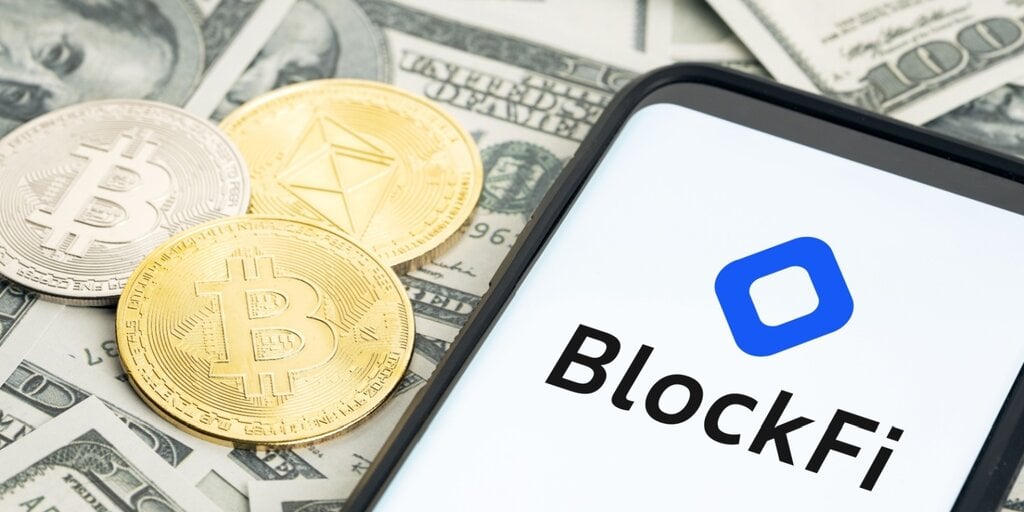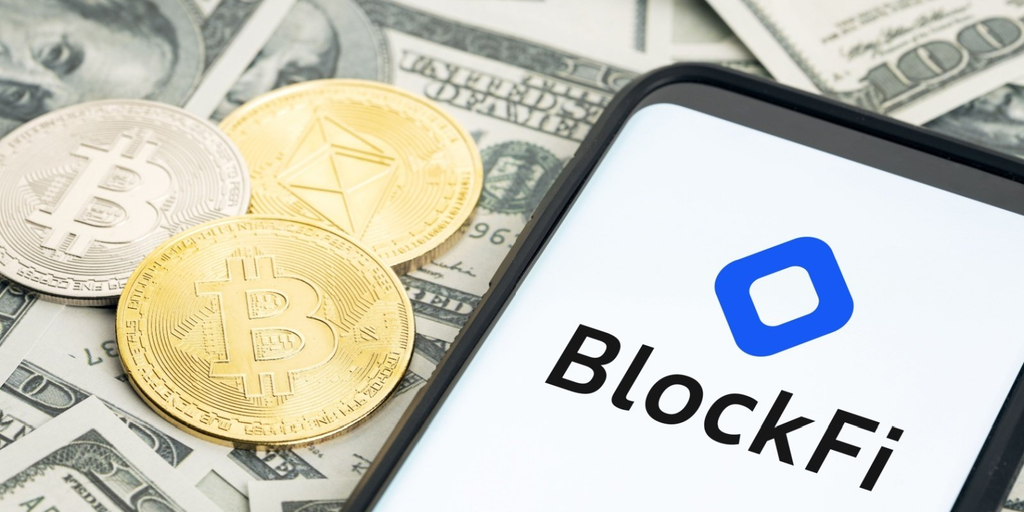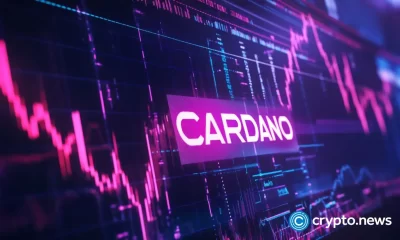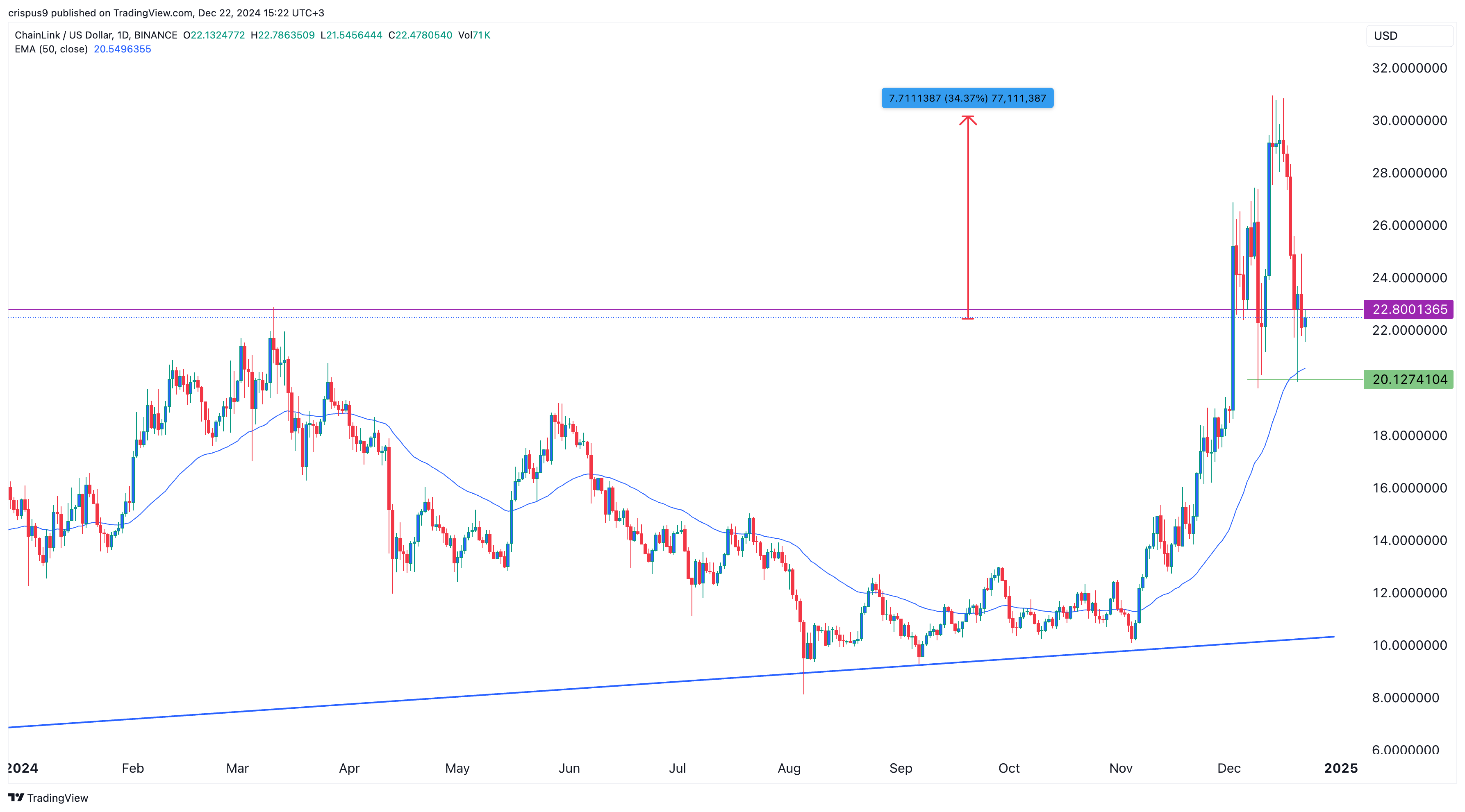Markets
BlockFi Repayments to Its 100,000 Creditors Will Begin This Month
Published
5 months agoon
By
admin

We do the research, you get the alpha!
Get exclusive reports and access to key insights on airdrops, NFTs, and more! Subscribe now to Alpha Reports and up your game!
Bankrupt crypto lender BlockFi will begin interim crypto distributions to creditors through Coinbase starting this month, the company wrote on Twitter and in a blog post.
“The distributions will be processed in batches in the coming months, and eligible clients will receive a notification to the BlockFi account email on file,” the company wrote on Wednesday. “Please note that non-US Clients are unable to receive funds at this time due to the regulatory requirements applicable to them.”
The news marks a significant step in BlockFi’s long journey since filing for Chapter 11 bankruptcy protection in November 2022 amid the collapse of crypto exchange FTX.
Founded in 2017 by Zac Prince and Flori Marquez, BlockFi quickly rose to prominence by offering high-yield interest accounts and crypto-backed loans. The company secured significant funding, including a $350 million Series D in March 2021 that valued it at $3 billion.
However, trouble began brewing in July 2021 when several U.S. states issued cease-and-desist orders against BlockFi, claiming its interest accounts were unregistered securities. In February 2022, the crypto lender settled with the SEC for $100 million over its lending product.
The killing blow came in November 2022, when FTX collapsed. BlockFi had substantial exposure to FTX and its trading arm, Alameda Research, with over $1.2 billion in assets tied up between them. When FTX and Alameda went under, BlockFi followed, citing liquidity issues. The lender filed for Chapter 11 bankruptcy on November 28, 2022, listing over 100,000 creditors.
In the ensuing proceedings, BlockFi executives largely blamed their woes on FTX and Alameda. The lender’s restructuring plan, which paves the way for creditor repayments, received 90% approval from voting creditors.
BlockFi emerged from bankruptcy in October 2023, nearly a year after filing. As part of its bankruptcy exit plan, BlockFi is now preparing to return customer funds, with distributions expected to start in early 2024.
According to BlockFi’s recent announcement, the company has partnered with Coinbase to facilitate the distribution of funds to creditors. The defunct crypto lender will begin processing withdrawals for wallet customers first, followed by distributions for BlockFi Interest Account (BIA) and loan customers.
The company estimates that BIA holders will recover anywhere from 39.4% to 100% of their funds, depending on the outcome of the FTX bankruptcy proceedings and the value of BlockFi’s equity in Robinhood.
As of July 2024, BlockFi customers are still awaiting the interim distributions announced by the company. Wallet customers have been able to withdraw funds, but BIA and loan customers have not yet received any repayments. The exact timing and amounts of these distributions remain uncertain, as they are tied to the complex legal proceedings surrounding FTX’s bankruptcy.
Edited by Stacy Elliott.
Daily Debrief Newsletter
Start every day with the top news stories right now, plus original features, a podcast, videos and more.
Source link
You may like


XRP’s $5, $10 goals are trending, but this altcoin with 7,400% potential takes the spotlight


CryptoQuant Hails Binance Reserve Amid High Leverage Trading


Trump Picks Bo Hines to Lead Presidential Crypto Council


The introduction of Hydra could see Cardano surpass Ethereum with 100,000 TPS


Top 4 Altcoins to Hold Before 2025 Alt Season


DeFi Protocol Usual’s Surge Catapults Hashnote’s Tokenized Treasury Over BlackRock’s BUIDL
DeFi
DeFi Protocol Usual’s Surge Catapults Hashnote’s Tokenized Treasury Over BlackRock’s BUIDL
Published
7 hours agoon
December 22, 2024By
admin
There’s been a change of guard at the rankings of the $3.4 billion tokenized Treasuries market.
Asset manager Hashnote’s USYC token zoomed over $1.2 billion in market capitalization, growing five-fold in size over the past three months, rwa.xyz data shows. It has toppled the $450 million BUIDL, issued by asset management behemoth BlackRock and tokenization firm Securitize, which was the largest product by size since April.

USYC is the token representation of the Hashnote International Short Duration Yield Fund, which, according to the company’s website, invests in reverse repo agreements on U.S. government-backed securities and Treasury bills held in custody at the Bank of New York Mellon.
Hashnote’s quick growth underscores the importance of interconnecting tokenized products with decentralized finance (DeFi) applications and presenting their tokens available as building blocks for other products — or composability, in crypto lingo — to scale and reach broader adoption. It also showcases crypto investors’ appetite for yield-generating stablecoins, which are increasingly backed by tokenized products.
USYC, for example, has greatly benefited from the rapid ascent of the budding decentralized finance (DeFi) protocol Usual and its real-world asset-backed, yield-generating stablecoin, USD0.
Usual is pursuing the market share of centralized stablecoins like Tether’s USDT and Circle’s USDC by redistributing a portion of revenues from its stablecoin’s backing assets to holders. USD0 is primarily backed by USYC currently, but the protocol aims to add more RWAs to reserves in the future. It has recently announced the addition of Ethena’s USDtb stablecoin, which is built on top of BUIDL.
“The bull market triggered a massive inflow into stablecoins, yet the core issue with the largest stablecoins remains: they lack rewards for end users and do not give access to the yield they generate,” said David Shuttleworth, partner at Anagram. “Moreover, users do not get access to the protocol’s equity by holding USDT or USDC.”
“Usual’s appeal is that it redistributes the yield along with ownership in the protocol back to users,” he added.

The protocol, and hence its USD0 stablecoin, has raked in $1.3 billion over the past few months as crypto investors chased on-chain yield opportunities. Another significant catalyst of growth was the protocol’s governance token (USUAL) airdrop and exchange listing on Wednesday. USUAL started trading on Binance on Wednesday, and vastly outperformed the shaky broader crypto market, appreciating some 50% since then, per CoinGecko data.
BlackRock’s BUIDL also enjoyed rapid growth earlier this year, driven by DeFi platform Ondo Finance making the token the key reserve asset of its own yield-earning product, the Ondo Short-Term US Government Treasuries (OUSG) token.
Source link
Markets
Chainlink price double bottoms as whales accumulate
Published
11 hours agoon
December 22, 2024By
admin
Chainlink formed a double-bottom pattern, pointing to a potential rebound, as signs showed that some whales were accumulating the token.
Chainlink (LINK), the biggest oracle provider, bottomed at $20.12 on Friday and rebounded to $22.50 on Sunday, Dec. 22. Still, the coin remains about 27% from its highest point this month, meaning that it is in a bear market.
A potential catalyst for the LINK token is that whales are accumulating it. According to LookOnChain, nine new wallets withdrew 362,380 coins from Binance in the last two days. These coins are now valued at over $8.19 million.
Crypto.news reported last week that another whale accumulated 65,000 LINK coins valued at $1.8 million.
Whales are accumulating $LINK!
We noticed 9 fresh wallets that withdrew 362,380 $LINK($8.19M) from #Binance in the last 48 hours.
Address:
0xdA44049389F87c1170C5e7319c9eb93acDf83304
0xC10396589a40438CcdF48bA1b2061a6067DAa972
0x5199b3Ce02a912056ea8A460371aD83020693F6C… pic.twitter.com/vpAMR0dhbd— Lookonchain (@lookonchain) December 22, 2024
These whales bought Chainlink a week after World Liberty Financial (WLFI), the DeFi platform launched by the Trump family, bought over 78,300 LINK tokens valued at over $1.7 million. It’s worth noting that President-elect Trump and his family mostly own WLFI tokens.
Chainlink, known in the crypto industry for its fundamentals, is the biggest oracle in the sector with over $35 billion in total value secured. That figure is higher than its biggest competitors like Chronicle, Pyth, Edge, and Redstone.
Chainlink’s ecosystem will likely grow as more chains and networks embrace its technology. Justin Sun’s Tron, the most recent chain to use its oracles, has switched from WINKLink to Chainlink.
Chainlink has also formed major partnerships in the Real World Asset tokenization industry, including by companies like Coinbase, Emirates NBD, SWIFT, and UBS.
Chainlink price formed a double-bottom pattern
LINK, like other cryptocurrencies, has dropped sharply in the past few days as concerns about the Federal Reserve remained.
The token has remained above the 50-day moving average on the daily chart. Most importantly, it has formed a double-bottom chart pattern at $20.12. This pattern happens when an asset fails to move below a specific price two times. It is one of the most bullish reversal patterns in the market.
LINK has also formed an inverse hammer pattern, a popular reversal sign. Therefore, the coin is likely to bounce back in the next few days as investors target the key psychological at $30, which is about 35% above the current level.
On the flip side, the bullish view will become invalid if the coin drops below the double-bottom point at $20.12.

Source link
Markets
Dog Memecoins Rebound as Bitcoin Reaches $98,000
Published
2 days agoon
December 21, 2024By
admin

Solana-based bonk (BONK) led growth among dog-themed memes Saturday as bitcoin staged a recovery rally to above $98,000, a day after Friday’s bloodbath that pushed it near $93,000.
BONK surged 30%, CoinGecko data shows, with dogecoin (DOGE), shiba inu (SHIB), dogwifhat (WIF) and floki (FLOKI) surging as much as 20%. The dog-themed token category gained 8% on average in the past 24 hours, beating a market-wide jump of 4.5% as tracked by the broad-based CoinDesk 20 (CD20) index.
Memecoins are known for their high volatility and tend to outperform major tokens during price rallies, serving as a leveraged bet on the overall crypto market sentiment.
However, in this case, fundamentals are helping back gains and sentiment among some memecoins. FLOKI was named alongside ether (ETH) and Avalanche’s AVAX as a utility token in a Commodity Futures Trading Commission (CFTC) meeting last month.
The derivatives regulator proposed in a Global Markets Advisory Committee (GMAC) a new class of assets termed utility tokens, which fulfill six criteria that include providing their holder “immediately available, non-incidental consumptive use” in a crypto platform without including “governance and voting abilities.”
“FLOKI was recently highlighted by the CFTC’s Global Markets Advisory Committee as a case study of a utility token, which is a big deal and validates Floki’s utility-first approach,” Floki lead developer B told CoinDesk in a Telegram message. “Floki’s Valhalla metaverse game will go live in early Q1 2024, and the recently released Floki Trading Bot has generated over a million dollars in fees.
“This puts Floki on an entirely different level from other memecoins, especially when the market turns and people start to pay attention to fundamentals again,” B added.
Elsewhere, interest in BONK comes as a host of activities intend to deflate token supply gain traction among users — a move that has historically contributed to higher prices.
BonkDAO, a decentralized group of bonk believers that maintain the token, burned 100 billion tokens from the circulating supply in November and targeted a trillion token burn in December. This could increase the token’s value due to scarcity.
The feat could meet its target in the weeks ahead, observers say.
Source link

XRP’s $5, $10 goals are trending, but this altcoin with 7,400% potential takes the spotlight

CryptoQuant Hails Binance Reserve Amid High Leverage Trading

Trump Picks Bo Hines to Lead Presidential Crypto Council

The introduction of Hydra could see Cardano surpass Ethereum with 100,000 TPS

Top 4 Altcoins to Hold Before 2025 Alt Season

DeFi Protocol Usual’s Surge Catapults Hashnote’s Tokenized Treasury Over BlackRock’s BUIDL

DOGE & SHIB holders embrace Lightchain AI for its growth and unique sports-crypto vision

Will Shiba Inu Price Hold Critical Support Amid Market Volatility?

Chainlink price double bottoms as whales accumulate

Ethereum Accumulation Address Holdings Surge By 60% In Five Months – Details

Ripple Transfers 90M Coins, What’s Happening?

Filecoin, Monero, and Lunex dominate smart investor portfolios

Bitwise CIO Matt Hougan Predicts Institutional Interest in Altcoins, Says 2025 the Year of Crypto Diversification

How Low Will Ethereum Price Go By The End of December?

Analyst says buying this altcoin at $0.15 could be as profitable as buying ETH at $0.66
182267361726451435

Why Did Trump Change His Mind on Bitcoin?

Top Crypto News Headlines of The Week

New U.S. president must bring clarity to crypto regulation, analyst says

Will XRP Price Defend $0.5 Support If SEC Decides to Appeal?

Bitcoin Open-Source Development Takes The Stage In Nashville

Ethereum, Solana touch key levels as Bitcoin spikes

Bitcoin 20% Surge In 3 Weeks Teases Record-Breaking Potential

Ethereum Crash A Buying Opportunity? This Whale Thinks So

Shiba Inu Price Slips 4% as 3500% Burn Rate Surge Fails to Halt Correction

Washington financial watchdog warns of scam involving fake crypto ‘professors’

‘Hamster Kombat’ Airdrop Delayed as Pre-Market Trading for Telegram Game Expands

Citigroup Executive Steps Down To Explore Crypto
Mostbet Güvenilir Mi – Casino Bonus 2024

NoOnes Bitcoin Philosophy: Everyone Eats
Trending

 3 months ago
3 months ago182267361726451435

 Donald Trump5 months ago
Donald Trump5 months agoWhy Did Trump Change His Mind on Bitcoin?

 24/7 Cryptocurrency News4 months ago
24/7 Cryptocurrency News4 months agoTop Crypto News Headlines of The Week

 News4 months ago
News4 months agoNew U.S. president must bring clarity to crypto regulation, analyst says

 Price analysis4 months ago
Price analysis4 months agoWill XRP Price Defend $0.5 Support If SEC Decides to Appeal?

 Opinion5 months ago
Opinion5 months agoBitcoin Open-Source Development Takes The Stage In Nashville

 Bitcoin5 months ago
Bitcoin5 months agoEthereum, Solana touch key levels as Bitcoin spikes

 Bitcoin5 months ago
Bitcoin5 months agoBitcoin 20% Surge In 3 Weeks Teases Record-Breaking Potential


